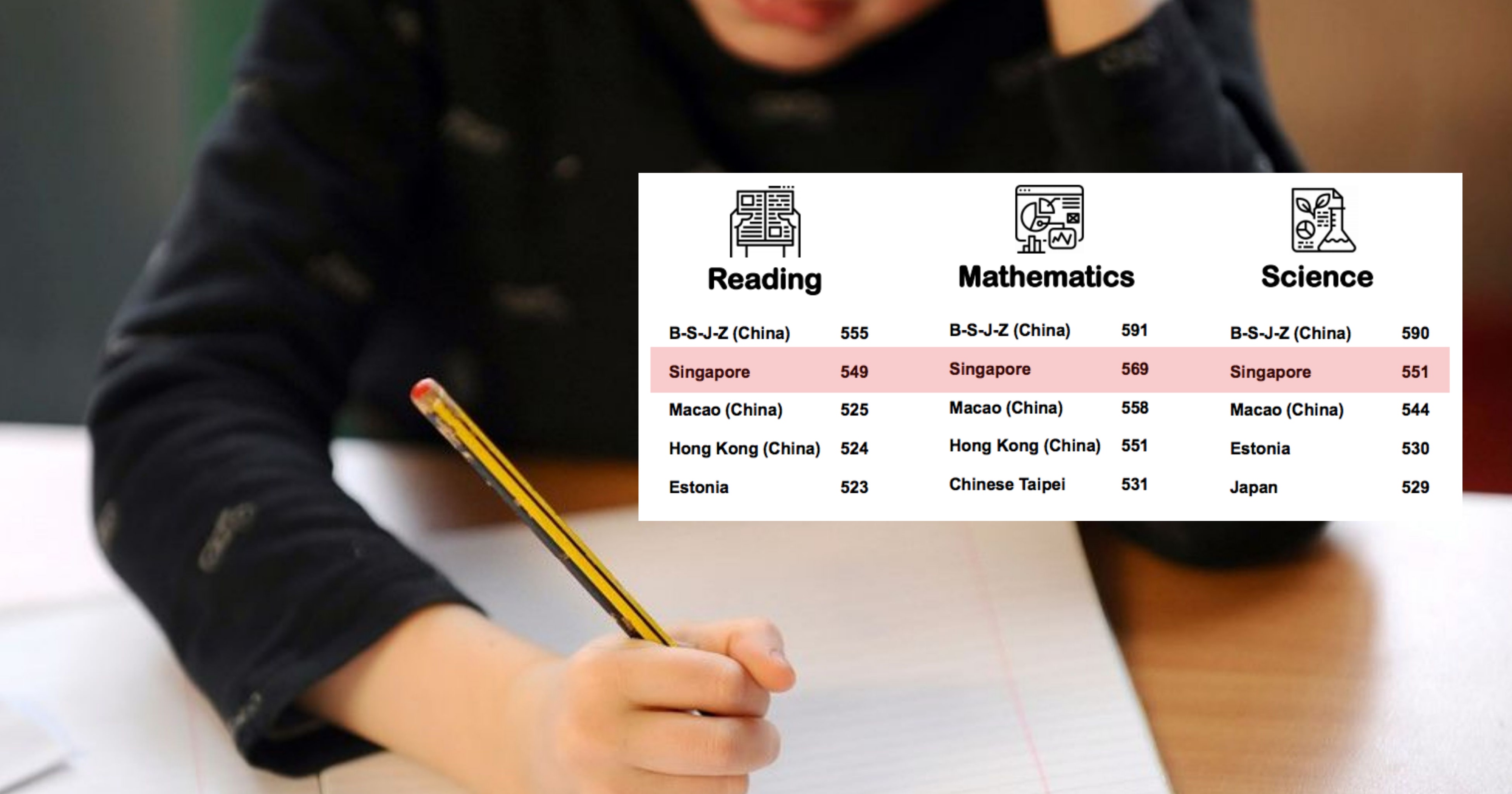Singapore has slipped behind China to be ranked second among 79 countries in the triennial Program for International Student Assessment (PISA) conducted by the Organisation for Economic Cooperation and Development (OECD).
The study, which includes a series of tests as well as surveys, assesses the ability of 15-year-old students from the participating countries to apply knowledge and skills in three areas: Reading, Mathematics and Science.
Reading scores improved significantly, but science scores dipped
Students were ranked from proficiency levels of one to six in each of the disciplines, with students who ranked in level one being regarded as low performers, while those who ranked in levels five and six being regarded as top performers.
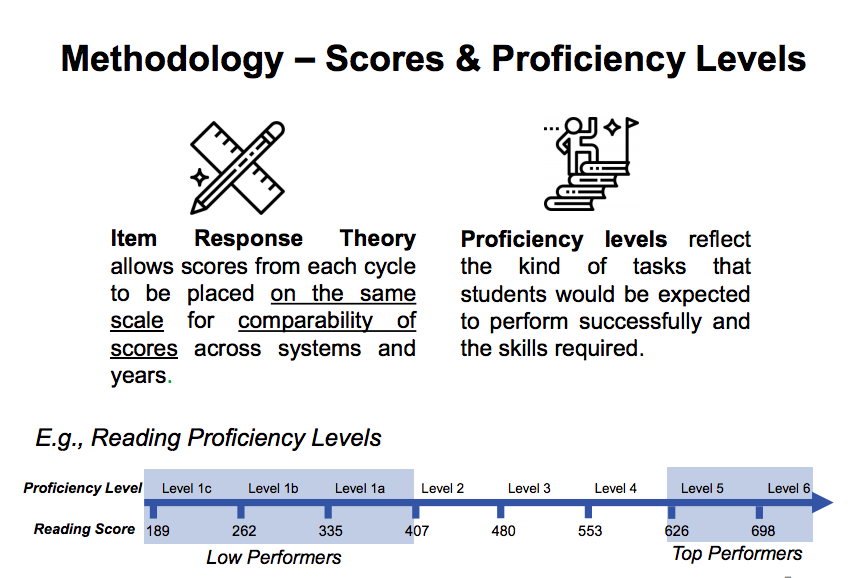 Image via MOE
Image via MOE
While Singapore's mean performance scores for Mathematics and Reading increased in 2018 compared with 2015, with our reading scores seeing the greatest improvement of the three, our mean performance scores for Science dipped slightly.
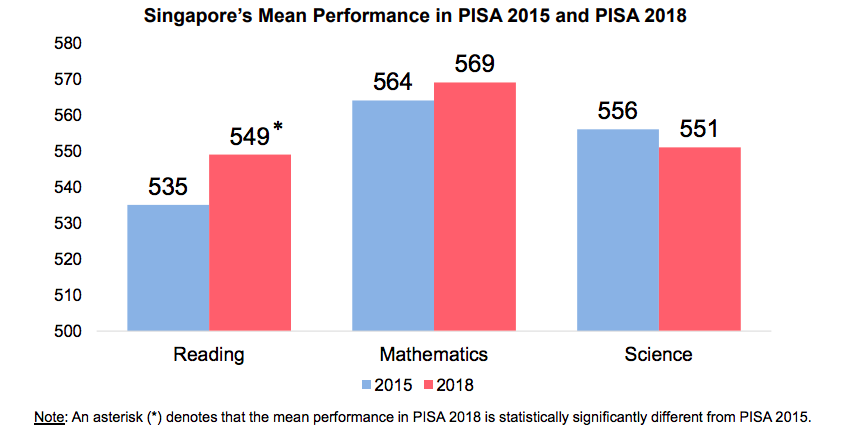 Image via MOE
Image via MOE
Four states in China (Beijing, Shanghai, Jiangsu and Zhejiang) also demonstrated stronger combined average scores to best Singapore in this round of tests, displacing Singapore from its top rank in 2015 — with the gap being starker in Math and Science:
 Image via MOE
Image via MOE
Other jurisdictions that ranked behind Singapore in PISA 2018 include Macau, Hong Kong, Taipei, Estonia and Japan.
How many Singapore students were tested, and from where?
Singapore has been a participant of PISA since 2009, one of 79 education systems that participated in 2018's study.
Of the 79, 37 were OECD economies while the other 42 were non-OECD economies.
A few are debutantes, such as Brunei Darussalam, the Philippines, Saudi Arabia and Ukraine.
From Singapore, a total of 6,676 students from 153 public secondary schools and 13 randomly-sampled private schools participated in PISA 2018.
Reading scores up reflective of S'pore students enjoying reading more than OECD peers
While students in Singapore enjoy reading more than their OECD peers, it seems that on the whole, our youth may not enjoy reading as much as they used to.
Accordingly, the proportion of students who enjoy reading is less than 50 per cent of the cohort here polled.
For instance, only 49 per cent of Singapore students agreed or strongly agreed that reading is one of their favourite hobbies.
In addition, 48 per cent of Singapore students also agreed or strongly agreed that they read only to get the information they need.
Also, 46 per cent said they read only if they have to.
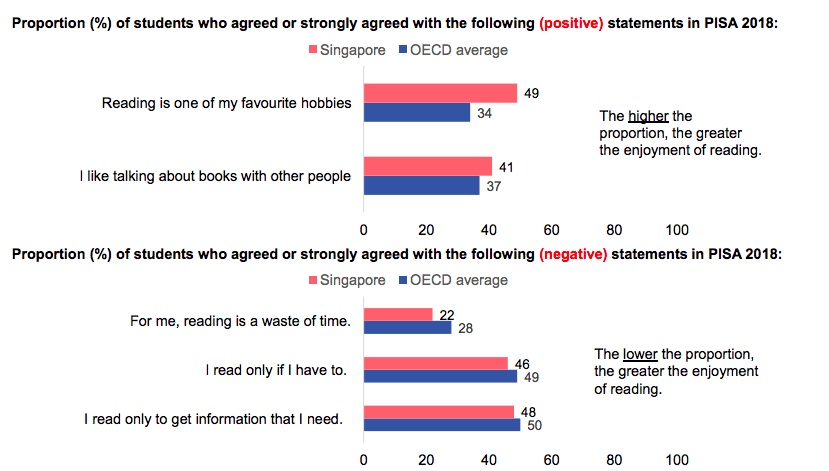 Image via MOE
Image via MOE
Students from lower-SES households in S'pore still performing better than OECD average
Having said that, our students from lower-SES homes are still performing better relative to international standards in the three disciplines.
The PISA results show that students from our bottom 25 per cent socioeconomic status continue to perform well compared to the bottom 25 per cent SES students from other OECD countries, even outperforming the average OECD scores:
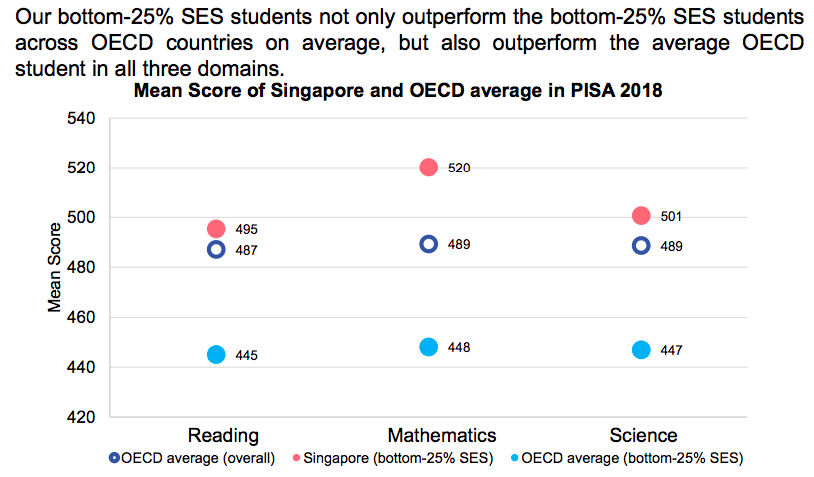 Image via MOE
Image via MOE
Singapore's bottom 25 per cent SES students have also shown marked improvement in Reading, Mathematics and Science since 10 years ago, when students from Singapore first took the tests:
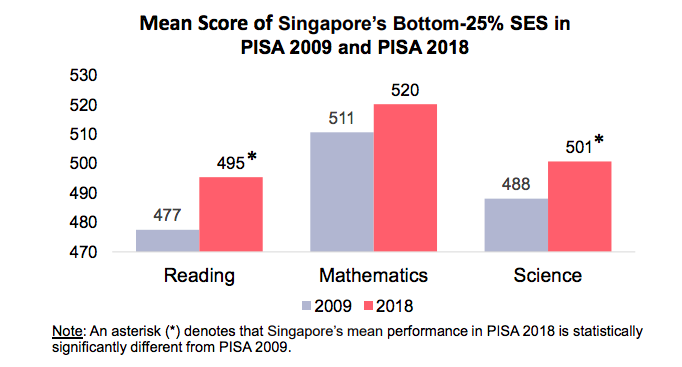 Image via MOE
Image via MOE
The Ministry of Education (MOE) has said that they will continually look into areas for improvement and work with schools, parents and community stakeholders to help students develop holistically.
This is done with the hopes that all students will be able to reach their fullest potential, regardless of their starting points in life.
Top image via Paul Townsend on Flickr
Content that keeps Mothership.sg going
??
We compare the colleagues you can't stand to these animals.
✈️?️
Click here for an itinerary for first time solo travellers.
????
Have you ever felt like a boomer in your 20s?
If you like what you read, follow us on Facebook, Instagram, Twitter and Telegram to get the latest updates.
